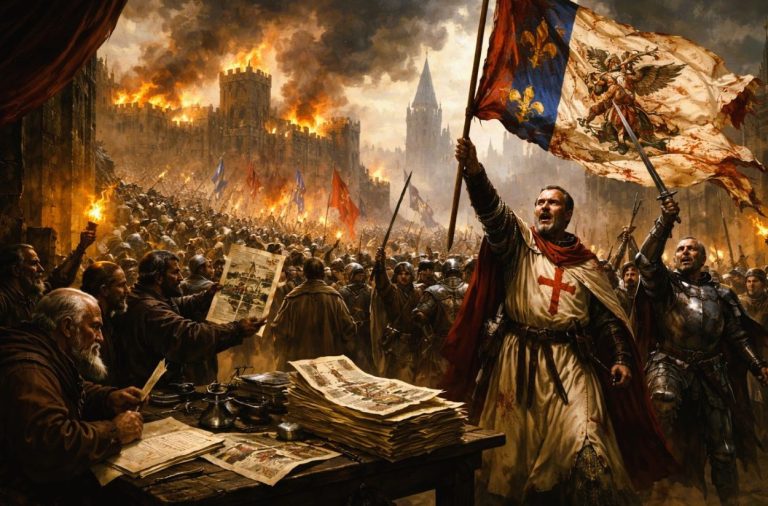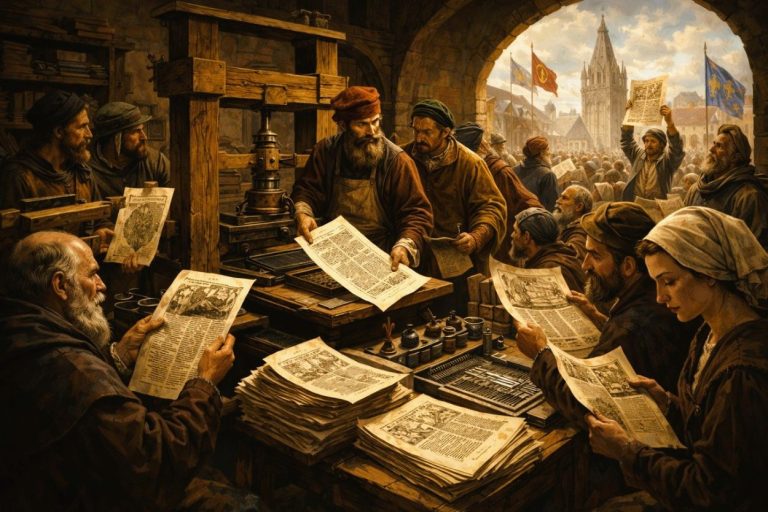
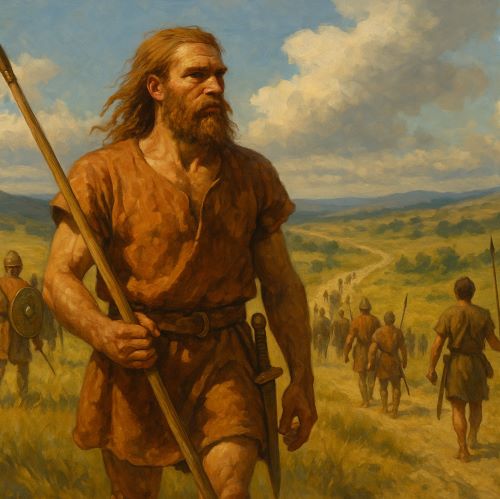
The migrations of Bronze Age men were seismic forces that shaped genetic maps, political systems, and gender ideologies across continents.

By Matthew A. McIntosh
Public Historian
Brewminate
Introduction: Shifting Landscapes and Restless Men
The Bronze Age (c. 3300–1200 BCE) was an era defined by technological innovation, cultural complexity, and the dynamic movement of peoples. Among its most intriguing patterns was the phenomenon of male migration. Archaeogenetic evidence, isotopic analyses, and archaeological contexts all point toward widespread mobility of men during this period—far more than women—in a process that reshaped the genetic, social, and political foundations of Eurasia. While the reasons for such movement were multifaceted—ranging from warfare and pastoral expansion to social systems of patrilocality and elite consolidation—the demographic consequences were profound. This essay explores the causes, scale, and significance of male migration during the Bronze Age, arguing that it not only reconfigured genetic lineages across continents but also redefined masculinity, identity, and power in early complex societies.
Genetic Ghosts: The Male Imprint in Bronze Age DNA
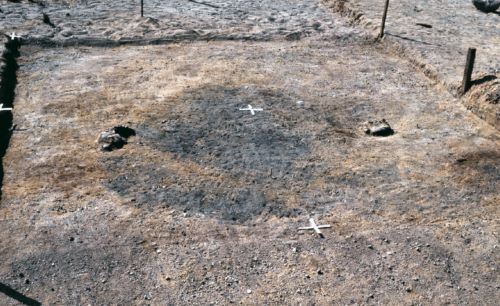
One of the most transformative tools in understanding Bronze Age mobility has come not from pottery shards or burial sites, but from ancient DNA. The landmark 2015 study by Haak et al. revealed a sweeping genetic turnover in Europe around 2500 BCE, traced to steppe pastoralists associated with the Yamnaya culture of the Pontic-Caspian region.1 The genetic data shows a dramatic replacement of male Y-chromosome haplogroups—specifically the rise of R1b-M269 and R1a lineages—while mitochondrial DNA (inherited maternally) remained relatively stable. This contrast suggests that men, more than women, were the primary agents of this mass migration.
The Corded Ware culture, which spread across Central and Northern Europe in the early third millennium BCE, provides a clear example. Genetic evidence from Corded Ware cemeteries shows a high degree of patrilineal continuity, while women often came from genetically distinct regions—supporting models of patrilocal residence and exogamous marriage systems.2 In other words, Bronze Age communities often imported brides but exported sons.
This male-driven migration was not a simple replacement, however. It was interwoven with cultural hybridization and the strategic integration of new power structures into existing local societies.
Warriors, Herdsmen, and Empire Builders
What drove such extensive male mobility? A constellation of factors coalesced to make the Bronze Age a uniquely mobile era for men. First and foremost, the rise of pastoral economies encouraged a lifestyle predicated on movement. Steppe societies such as the Yamnaya and later Andronovo were mobile herders, reliant on open grasslands and seasonal pasturing. Their wealth—and their status—were tied to livestock, which necessitated constant male involvement in herding and territorial expansion.3
Second, the increasing militarization of Bronze Age societies made war and raiding a principal avenue for male social advancement. The proliferation of fortified settlements, warrior burials with weapons, and chariot technology all reflect a world in which martial prowess was valorized and rewarded.4 Male migration was often inseparable from conquest: it was not just the pastoralist but the warrior who spread his genes, his culture, and his gods across the Bronze Age landscape.
Moreover, emerging political hierarchies and elite lineages consolidated their legitimacy through control over mobile male populations. Kings and chieftains—whether in Mycenaean Greece, Hittite Anatolia, or the Indus Valley—relied on retinues of warrior-men, many of whom may have originated from distant regions.5 Elite male migration thus became both a cause and consequence of state formation.
Isotopes and Identity: Tracing the Lives of Bronze Age Men
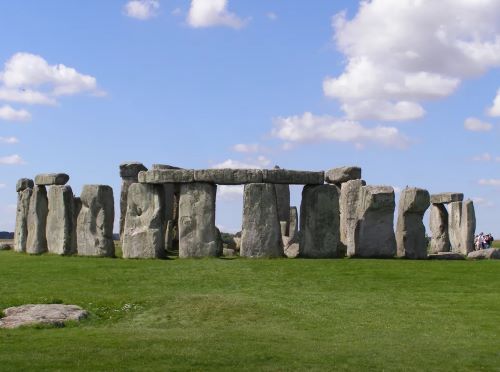
Strontium and oxygen isotope analysis, which can reveal the geographic origin of human remains, has added new depth to our understanding of Bronze Age mobility. For example, the Lech Valley in southern Germany yielded a remarkable finding: while women were often non-local, men tended to remain in their natal regions.6 Yet elsewhere—such as in Scandinavia and the Carpathian Basin—the opposite is true. Male remains often show isotopic signatures from distant regions, sometimes hundreds of kilometers away from burial sites.
The so-called “Amesbury Archer” buried near Stonehenge, dating to around 2300 BCE, provides a striking case. Isotopic and artefactual evidence suggests he originated in the Alps and migrated to Britain, possibly as a metalworker or elite individual tied to trade and ritual networks.7 His grave—rich in gold and weaponry—illustrates how migration could confer status, not alienation.
Such individuals were not anomalies. They embodied a broader pattern in which Bronze Age masculinity became entangled with notions of movement, skill, and martial success. To be a man, in many contexts, was to be mobile—to prove oneself in foreign lands, to bring back wealth, wives, and glory.
Gender, Power, and the Mythology of Movement
The prevalence of male migration also reinforced gendered social structures. Patrilocality and patrilineality, dominant across many Bronze Age societies, created systems in which male movement was institutionalized, while women were absorbed into foreign households and clans. This dynamic is reflected not only in biological data but also in mythology and ritual.
Consider Indo-European mythologies that emerged from these same migratory populations. The Rigveda of ancient India, composed by Indo-Aryan migrants, celebrates heroic male wanderers, raiders, and sacrificers.8 Similarly, Greek epics like the Odyssey valorize long male journeys and the social reconstruction of power upon return. These were not merely stories—they were cultural reflections of the Bronze Age masculine ideal: the migrating son, the conquering warrior, the patriarch-in-the-making.
But not all male migration was voluntary. The Bronze Age also witnessed the enslavement and displacement of men, particularly in contexts of conquest. Linear B tablets from Mycenaean palaces record male laborers (sometimes foreign names), likely war captives or economic migrants.9 Thus, male migration could be both elite privilege and coerced reality.
Conclusion: Legacies of the Bronze Age Male Exodus
The migrations of Bronze Age men were not mere footnotes in the annals of prehistory—they were seismic forces that shaped genetic maps, political systems, and gender ideologies across continents. From the steppes of Eurasia to the shores of the Aegean, the restless movement of men transformed societies, linking distant regions through webs of kinship, violence, and trade. Their bones tell stories of struggle and adaptation; their myths whisper of ambition and survival.
To understand the Bronze Age male is to understand a paradox: he was both rootless and rooted, both destroyer and builder, both exile and founder. And in his wanderings, he left footprints not only in the ground—but in us.
Footnotes
- Wolfgang Haak et al., “Massive Migration from the Steppe Was a Source for Indo-European Languages in Europe,” Nature 522 (2015): 207–211.
- Ibid.
- David W. Anthony, The Horse, the Wheel, and Language: How Bronze-Age Riders from the Eurasian Steppes Shaped the Modern World (Princeton: Princeton University Press, 2007), 299–302.
- Kristian Kristiansen and Thomas B. Larsson, The Rise of Bronze Age Society: Travels, Transmissions and Transformations (Cambridge: Cambridge University Press, 2005), 128–132.
- Marc Van de Mieroop, A History of the Ancient Near East, ca. 3000–323 BC, 3rd ed. (Chichester: Wiley-Blackwell, 2015), 76–80.
- Philipp W. Stockhammer et al., “Tracing Mobility Patterns of Individuals in Prehistoric Populations,” Science Advances 6, no. 6 (2020): eaaz0034.
- Andrew Fitzpatrick, “The Amesbury Archer: A Well-Furnished Man in the Right Place at the Right Time?” British Archaeology 66 (2002): 14–18.
- Stephanie W. Jamison and Joel P. Brereton, The Rigveda: The Earliest Religious Poetry of India (Oxford: Oxford University Press, 2014).
- Cynthia Shelmerdine, “Mycenaean Society,” in The Cambridge Companion to the Aegean Bronze Age, ed. Cynthia W. Shelmerdine (Cambridge: Cambridge University Press, 2008), 291–310.
Bibliography
- Anthony, David W. The Horse, the Wheel, and Language: How Bronze-Age Riders from the Eurasian Steppes Shaped the Modern World. Princeton: Princeton University Press, 2007.
- Fitzpatrick, Andrew. “The Amesbury Archer: A Well-Furnished Man in the Right Place at the Right Time?” British Archaeology 66 (2002): 14–18.
- Haak, Wolfgang, et al. “Massive Migration from the Steppe Was a Source for Indo-European Languages in Europe.” Nature 522 (2015): 207–211.
- Jamison, Stephanie W., and Joel P. Brereton. The Rigveda: The Earliest Religious Poetry of India. Oxford: Oxford University Press, 2014.
- Kristiansen, Kristian, and Thomas B. Larsson. The Rise of Bronze Age Society: Travels, Transmissions and Transformations. Cambridge: Cambridge University Press, 2005.
- Shelmerdine, Cynthia. “Mycenaean Society.” In The Cambridge Companion to the Aegean Bronze Age, edited by Cynthia W. Shelmerdine, 291–310. Cambridge: Cambridge University Press, 2008.
- Stockhammer, Philipp W., et al. “Tracing Mobility Patterns of Individuals in Prehistoric Populations.” Science Advances 6, no. 6 (2020): eaaz0034.
- Van de Mieroop, Marc. A History of the Ancient Near East, ca. 3000–323 BC. 3rd ed. Chichester: Wiley-Blackwell, 2015.
Originally published by Brewminate, 07.10.2025, under the terms of a Creative Commons Attribution-NonCommercial-NoDerivatives 4.0 International license.
